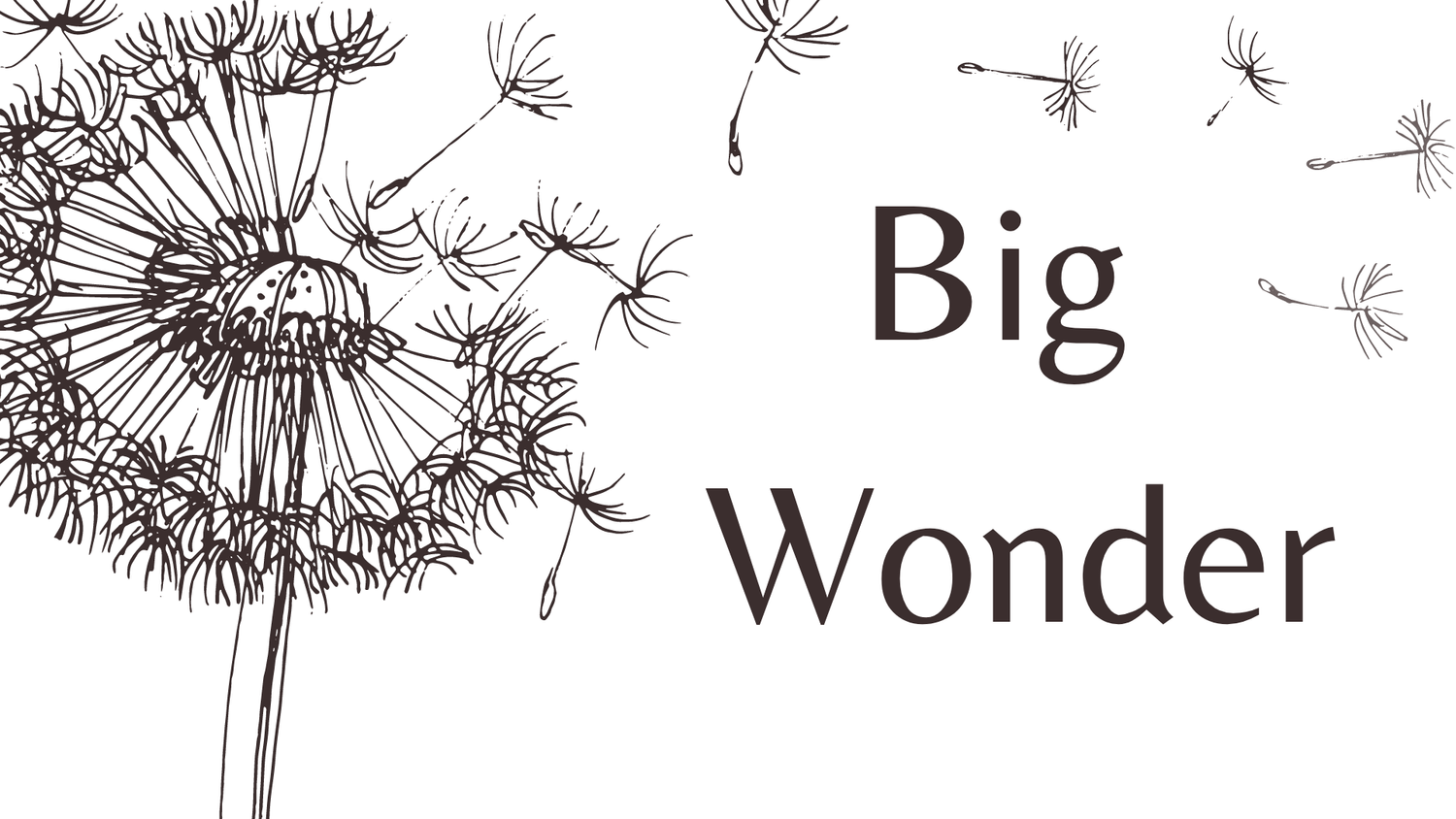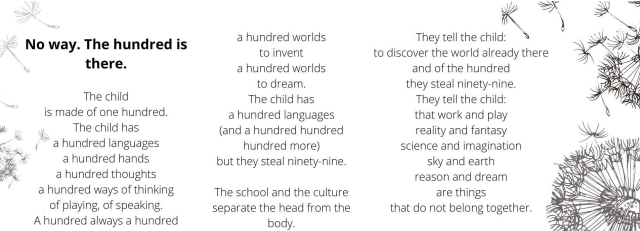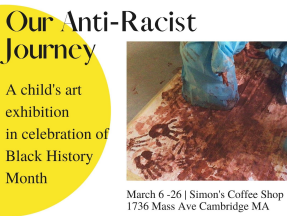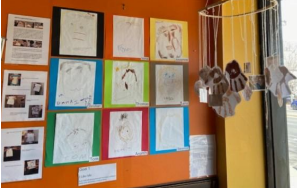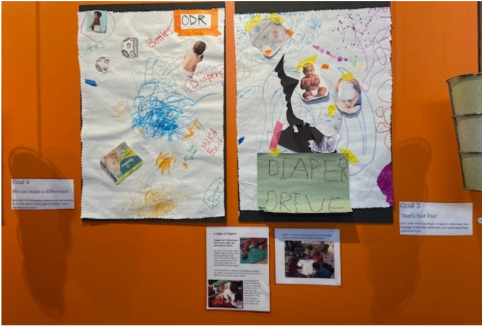The Beauty of Anti-Bias Education
Children have the right to classrooms that are free from prejudice. How do we create schools that are without prejudice?
Anti-Bias Education is a powerful way to remove prejudice from preschool classrooms.
My favorite poem is by Loris Malaguzzi, titled, ‘No way. The hundred is there.” This poignant poem shares that there are a hundred different languages of children. There is a beautiful freedom expressed, a world of acceptance, of unadulterated joy, and unencumbered expression and authenticity. Reading this poem released something within me- my own need for perfectionism and the deep desire to preserve a hundred languages in children. How would the world change, if children held onto their hundred languages? Their wonder, their joy, their expression?
Recently, I have been reflecting on this poem from the lens of anti-bias education. What does it mean to have a hundred languages? Where does this freedom come from? How does a child’s freedom of self-expression and reinvention become encumbered, restricted?
Through my experience as an educator, and through my work with anti-bias education, I have learned that racism, sexism, transphobia, and all forms of oppression systematically steal a child's hundred languages. Like poison, prejudices are absorbed, staining the child’s ability for self-expression and their uninhibited acceptance of themselves and others. The language of oppression teaches us that we if we are not in the ‘in-group, or the ‘powerful’ group, we will be shamed, ‘othered,’ deemed less worthy. And equally harmful, a culture of perfectionism, competition, and fear is created.
Words of the oppressor are as omnipresent as the air children breathe. Oppressive norms quickly shape a young child’s perspective gender expectations. And what it means to be black, white, or brown, What it means to be rich, poor, lean, short, Jewish or Muslim. What it means if you have two parents or one parent, or same-sex parents. In all of its forms, the voice of oppression steals the hundred languages and replaces them with a world filled with a thousand rules and the inability for authentic living. How is a young child’s authentic self supposed to thrive?
So, I asked myself, “What does it mean to have a hundred languages?”
In addition to freedom from prejudice and hate, it is freedom from an inner dialogue sullied with thoughts that are oppressive or prejudiced in nature.
It is knowing that skin color doesn't define your friendships.
That gender doesn't define your favorite color.
Or that money doesn’t define your worth.
We want our children to have freedom of expression, freedom to think, and freedom to explore who they are and want to become. The ability to see their own beauty.
That is what the hundred languages mean to me. And like it or not, as an educator, I am a gatekeeper. I decide on what stories are told, what values are shared, and who is represented in the classroom. This is a power and responsibility I do not hold lightly. How can I work towards achieving a community that resists oppressive narratives and allows children to blossom with their hundred languages?
Looking for a Roadmap
Three years ago, I was the Education Coordinator at Harvard Yard Child Care Center. Collectively, we knew we needed to offer more if the children in our care could develop the skills needed to reject the whispers of oppression that fill the air like static. We needed greater representation and stories of resistance. We needed dialogue about justice, empathy, power, advocacy, race, gender, religion, and so much more.
Taking this on was daunting and scary. The first step for us was seeing the need for anti-bias education. The second was having a path, one we would all take as families, children, and educators. To our delight, we stumbled upon the four goals of anti-bias education (ABE), developed by Louise Derman-Sparks and Julie Olsen Edwards. With these goals, we saw how we could begin to preserve the hundred languages and enable children to grow without prejudice.
The Four Goals of Anti-Bias Education
ABE is rooted in community building and elevates our vocation as educators to agents of change. The four goals of ABE make systemic cultural changes in a classroom or school a natural, simple evolution of thought and action. Combined with Reggio-inspired beliefs in the power of play, dialogue, and child-led inquiry, sparks of innovation, dreaming, risk-taking, and dialogue grow spontaneously.
I can imagine no greater joy as an educator than watching the transformation unfold in my heart and in the hearts of children in my care, a transformation of thought and action needed for a more just and equitable society.
1) I LIKE ME (Identity)
The first goal strives to help children understand and appreciate every part of their identities: race, gender, physical abilities, economic class, family structure, appearance, religion, etc.
Objectives:
Teachers will nurture each child’s construction of knowledgeable, confident, individual personal and social identities.
Children will demonstrate self-awareness, confidence, family pride, and positive social identities.
(source: www.naeyc.org/resources/pubs/yc/nov2019/understanding-anti-bias).
A positive self-identity is necessary for the following three ABE goals to take root.
2) I LIKE YOU (Diversity)
The second goal helps children to see and embrace difference. From a child appreciating that their friend has a wildly different lunch then their your own to embracing different of family structures
Objectives:
Teachers will promote each child’s comfortable, empathetic interaction with people from diverse backgrounds.
Children will express comfort and joy with human diversity, use accurate language for human differences, and form deep, caring connections across all dimensions of human diversity.
(source: www.naeyc.org/resources/pubs/yc/nov2019/understanding-anti-bias).
Far more than teaching tolerance, the second goal teaches an appreciation for differences within their communities. By providing context, representation, and vocabulary, the second goal replaces fear and uncertainty with warmth and positivity. When we see our differences, we also see the noble humanity that connects us.
3) THAT IS NOT FAIR (Justice)
The first step to solving any problem is the ability to acknowledge and fully see it.
Objectives:
Teachers will foster each child’s capacity to identify bias and will nurture each child’s empathy for the hurt bias causes.
Children will increasingly recognize unfairness (injustice), have the language to describe unfairness, and understand that unfairness hurts.
(source: www.naeyc.org/resources/pubs/yc/nov2019/understanding-anti-bias).
This goal centers on a child’s ability to think critically about what is ‘fair’ and ‘unfair.’ A sense of fairness develops early and is a natural internal driver of a child’s budding moral compass. Recognizing when something is fair or unfair and developing a concept of equity, leads children to greater awareness of justice and a desire for fairness. Understanding justice and fairness help child respect others and feel empowered to make a difference in their community.
4) I CAN MAKE IT BETTER (Activism)
Learning about injustice doesn’t lead a child to a sense of hopelessness or apathy. Children become empowered when supported. Their innate passion and empathy drives them towards advocacy and activism to make things better.
Objectives:
Teachers will cultivate each child’s ability and confidence to stand up for oneself and for others in the face of bias.
Children will demonstrate a sense of empowerment and the skills to act with others or alone against prejudice and/or discriminatory actions.
(source:www.naeyc.org/resources/pubs/yc/nov2019/understanding-anti-bias).
Often the hardest to get too, goal #4 is also the most rewarding. Collective activism leads to a sense of community, meaningful friendships, and a growing sense of efficacy. Making an impact teaches children about their power and ability to have a positive impact on their world. The joy, sense of purpose, and elation of fulfilling a mission can make young children feel like real-life superheroes. Unequivocally, achieving the fourth goal captures what a flourishing classroom can look like.
Louise Derman-Sparks and Julie Olsen Edwards' landmark book, Anti-Bias Education for Young Children and Ourselves, provides great insight into the breadth and depth of ABE and ways it can be meaningfully infused into everyday interactions with children, families, and teachers.
A Community with a 100 Languages and More
As the years progressed, I saw the four goals of anti-bias education spur a magical transformation and a profound cultural shift. Everything blossomed with intention and purpose under the ABE framework- from the daily routines, materials, communication, and dialogue between teachers, children, and families.
Educators found freedom from fear and perfectionism, and expressed a heightened level of compassion and perspective-taking with each other, with parents, and with children. Parents found ways to pursue conversations that scared them, connected more meaningfully with our documentation, and became more involved in the classroom.
The children held on to their 100 languages and strengthened them at every turn. They knew who they were, were comfortable in what they were becoming, asked hard questions, made daring inventions and predictions, and fought for each other's rights. They were empowered, loving, change agents. They were children who inquired about differences with curiosity and love, who were rooted in their values of equity and perspective-taking. Moreover, they could express their needs and beliefs and knew their power to make a difference. Through their leadership, we organized diaper drives for babies and celebrated their growth and expression at an anti-racist art exhibit at a local coffee shop. This was the 100 languages in action. And it was breathtaking.
At no point did we feel like we had all the answers or were doing it perfectly. We grappled with how to commemorate religious holy days, how to learn about native cultures in November and every month of the year, how to introduce racial injustice in a way that did not ‘other’ or traumatize. We were unsure how to follow the children’s inquiry and introduce concepts and stories needed to ward off prejudice from infecting hearts and stealing the hundred languages. We adopted a posture of humble learning; we embraced the hard questions and had the courage to follow the path our questioning lead us.
By empowering the children, we empowered ourselves. By helping the children express their hundred languages of joy, empowerment, and expression, we began to remove what had stolen them from us. That is the magic sauce of the dynamic partnership of a Reggio-inspired practice and Anti-Bias education. It's the collective evolution of everyone participating.
Subsequent articles will share provocations in Reggio-inspired classrooms that can lead to meaningful dialogue about race in classrooms for infants, toddlers, and preschoolers.
------
Celeste is currently working with a team of educators on a curriculum specifically about teaching children about race as a human construct in collaboration with a u.lab at MIT, The framework underdevelopment is called The Arise Framework. Would you like to help develop this framework through action research? Please connect through our Contact Us page!
